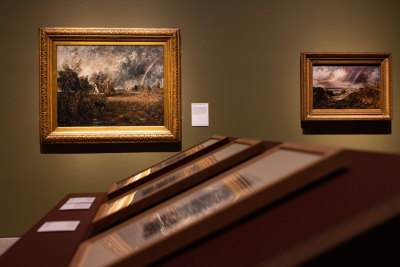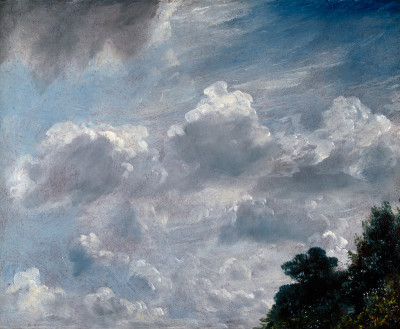Object of the month: October 2015
Object of the month: October 2015
By The RA Collections Team
Published 1 October 2015
A 19th-century cast of Francesco Laurana’s bust of Maria Sforza is currently on display in the RA Library as part of Edmund de Waal’s project, ‘white’.
-
The RA collection includes an extensive array of plaster casts, taken from celebrated sculptures of the Antique and Renaissance periods. Collected since the eighteenth-century, the practice of drawing from and gaining a thorough knowledge of the finest examples of such sculpture was an essential part of a student’s training. The importance placed on a student’s ability to draw from the casts of statues, busts, bas-reliefs was such that entry to the RA Schools was judged by entry of a drawing from a cast. Only when students had successfully demonstrated their aptitude for drawing from casts in the Antique Academy were they allowed to progress to drawing from the live model in the Life School.
A collection of casts was already in existence for the students joining the Schools in 1769 and the Academy actively searched for new sources from which to acquire casts; many collectors donated casts as gifts. A large majority of the casts were acquired in the nineteenth-century from the London firm D. Brucciani & Co, including this plaster cast of a bust of a woman. A native of Lucca, Domenico Brucciani arrived in England during the 1830s; by 1837 he had established his business in Covent Garden and his “Galleria” was renowned for supplying “copies of all the finest statuary in existence”.
This cast was taken from a marble original of about 1473 attributed to the sculptor Francesco Laurana (c.1430–c.1502). Laurana was born in Vrana, Dalmatia in the republic of Venice (now Croatia). He was one of a group of Dalmatian artists who worked abroad at the foreign courts. He is first recorded working in Naples in 1453, and in France at the court of Rene of Anjou and Sicily duing the 1460s. He is most noted for his series of portrait busts of the royal ladies of the Aragonese court at Naples, which he executed during his return to Naples in the 1470s.
The model for this bust is thought to be Ippolita Maria Sforza, (1446-1484), a member of one of the powerful condottieri, or military ruling families, of Renaissance Italy. The Sforza ruled the Duchy of Milan from about 1450–1535. In 1465, aged 19, Ippolita married Alfonso of Aragon, Duke of Calabria (1448–1495), eldest son of King Ferdinand I of Naples. Alfonso was a great supporter of artistic patronage in Naples and as homegrown artistic talent was not particularly prolific, there was a demand for established foreign talent; Francesco Laurana was one such artist brought in to work for the court.
-

After Francesco Laurana, Bust of a Woman, possibly Ippolita Maria Sforza, c. 1473.
Plaster cast after marble original by Francesco Laurana (c. 1430-1502), c. 1473, ‘Bust of a woman, possibly Ippolita Maria Sforza’.
19th-century plaster cast. © Royal Academy of Arts, London.
-
Laurana has carved the sitter’s face with great sensitivity; the smooth features and calm expression are characteristic throughout all his portrait busts. The simplicity of line suggests a formal abstraction that can be associated partly with late Gothic sculpture, but also with Laurana’s personal artistic favouring of geometric perfection. While she may appear to us as enigmatic or aloof, Ippolita Maria’s reserved expression and refined features can be understood within the context of fifteenth-century courtly notions of appropriate female comportment and decorum. With her downturned, non-confrontational gaze and demure smile, her expression visually conveys the attributes of modesty, poise and breeding. Laurana’s portrait busts are specifically court art – elegant, pure and aristocratic. The women of the Aragonese court at Naples may have requested to be portrayed specifically in this way; indeed this style possibly originated with Ippolita herself and the ideals of womanhood drawn from her Milanese court roots. Another striking feature of this bust is the ornate hairstyle – the hair pulled away from the face and twisted in a thick, snake-like rope around the head, interwoven with a ribbon. Dressing the hair in such a manner was costly and time-consuming, reserved only for the elite social classes and therefore also communicating the sitter’s aristocratic and refined social standing. In the very public and hierarchical environment of the court, hairstyle was an important communicator of status, social identity and connection; generally new brides would adopt the dress of their husband’s courts.
The history of the original sculpture is entwined with the wider phenomenon of theft, dispersal, damage and restitution which occurred to thousands of works of art during and in the aftermath of World War Two. Previously in the collection of the Berlin Staatliche Museum, the Laurana bust was housed along with a large part of the Berlin Museums collection in the Friedrichshain flak tower for protection during the war. In the closing days of the war, two fires occurred at the tower causing devastating damage to the artworks. In the resulting turmoil of the fire and post-war aftermath, thefts and damage occurred to the artworks by individuals and over the course of 1945 by Western Allies and the Soviet Union seizing parts of the collection as reparation.
Of the Laurana bust, only the head remained in Berlin, with severe smoke marks indicating its plight. The shoulders, having been taken to the Soviet Union, are thought to still remain in Russian collections. The cast shows us the delicate incised decoration of fabric covering the shoulders; the marble original retained traces of pigmentation and gilding, indicating that the bust was originally coloured. The hole visible in the centre of the breast suggests that a real brooch or pendant may have been displayed on the marble bust and the cartouche may have displayed the name of the sitter. The base is decorated with two reclining female figures and winged cupids in a classicising style. This decoration varies across the bases of the original Laurana busts currently on display in public collections across the world, suggesting that perhaps the subject of this decorative feature – now obscure – related to the character of the sitter.
Therefore, while no longer used to copy from, this cast in the RA collection remains an important record of the sculpture as it looked in its whole form. While Laurana’s original work remains damaged and in a fragmentary state, a reminder of the traumatic history of Europe’s art collection during World War Two, the cast allows us to see and appreciate, to an extent, the unity of the artist’s intentions and artwork.
This artwork is currently on display in white - a project by Edmund de Waal, a unique curated display of objects in the RA Library and Print Room, a space previously closed to the public. Watch a video of Edmund de Waal introducing this intriguing project. Here, he picks his top works from the exhibition.
October’s Artist of the month is George Jones RA. See more from the RA Collection.




